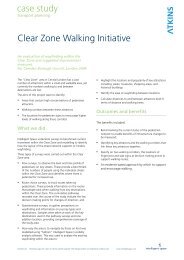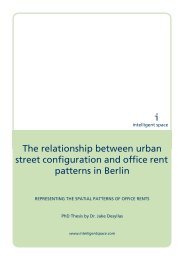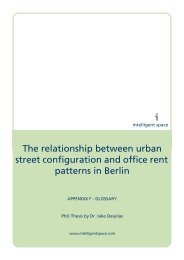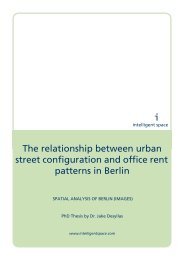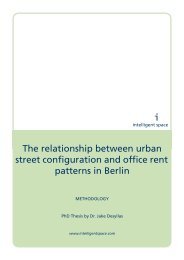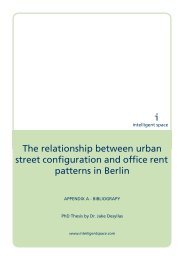Notting Hill Carnival Strategic Review - Intelligent Space
Notting Hill Carnival Strategic Review - Intelligent Space
Notting Hill Carnival Strategic Review - Intelligent Space
You also want an ePaper? Increase the reach of your titles
YUMPU automatically turns print PDFs into web optimized ePapers that Google loves.
Practice was introduced in 1993, setting out the minimum standards of safety for the <strong>Carnival</strong> in<br />
a number of operational areas. Lead agencies are identified for each operational area and both<br />
the Statement and the Code are reviewed annually and signed by a representative of each<br />
organisation in order to signify their agreement with its terms. The following table provides a<br />
summary of the ‘lead agency’ status accorded by the Statement and Code.<br />
Table 2: Statement of Intent and Code of Practice – Summary of Responsibilities and Designation of Lead Agency Status<br />
Operational Areas<br />
NHCT/<br />
LNHCL<br />
WCC RBKC MPS BTP SJA LAS LUL LFB<br />
<strong>Carnival</strong> route <br />
Children’s Day route (Sunday) <br />
Access point to the route <br />
<strong>Carnival</strong> bands (floats)<br />
Sound systems <br />
Closing down dime <br />
Public safety managers<br />
Safety zones <br />
Pedestrian zones <br />
Street Trading <br />
Sale of intoxicating liquor<br />
<br />
<br />
Road signs <br />
Panorama <br />
<br />
1.45 The Statement contains a proviso that whilst the document itself purports to set out the overall<br />
intentions of the parties, it is not “intended [to] create a legally binding contract between<br />
them”. Further, a number of operational areas, such as close down times, bands (floats), and<br />
sound systems appear to require the compliance of members of the various <strong>Carnival</strong> arenas,<br />
although they are not signatories.<br />
1.46 In addition to the Statement and the Code, the multi-agency planning characteristics of the<br />
event has been recognised through the formation of a <strong>Carnival</strong> Safety Liaison Group (CSLG).<br />
Membership of the group is made up of officers representing the <strong>Carnival</strong> organiser and all the<br />
statutory agencies who have some involvement with the <strong>Carnival</strong>. The group served as a forum<br />
for the exchange of information about operational, public safety and contingency planning<br />
arrangements. In 2002, the CSLP was replaced by the Operational Planning and Safety Group<br />
(OPSG) 38 . Whilst the former had been convened and chaired by NHCT, the latter is now<br />
convened and chaired by WCC. The central underlying concerns posed by the current<br />
management and planning arrangements for the <strong>Carnival</strong> are those of accountability and<br />
responsibility. As part of this review therefore, an analysis of the current legislative framework<br />
was undertaken, together with an examination of the various roles played by each stakeholder.<br />
38<br />
The following organisations are members of the OPSG (and were also members of the <strong>Carnival</strong> Safety Liaison Group): Royal Borough of<br />
Kensington and Chelsea; City of Westminster; Metropolitan Police Service; British Transport Police; Transport for London; London<br />
Underground Ltd; London Buses Ltd; St. John Ambulance; London Ambulance Service; London Fire Emergency and Planning Authority;<br />
<strong>Notting</strong> <strong>Hill</strong> <strong>Carnival</strong> Trust/ London <strong>Notting</strong> <strong>Hill</strong> <strong>Carnival</strong> Ltd. The Greater London Authority became a member of the Safety Group (and<br />
its successor, the OPSG) as a consequence of this strategic review.<br />
45



